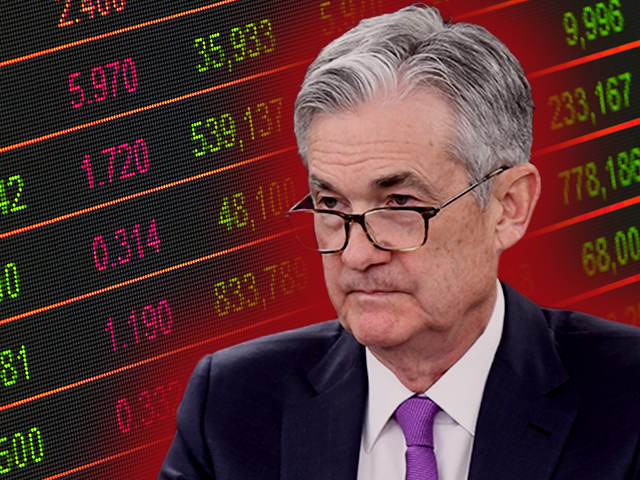Fighting the Fed—Again!
What is it going to take to move the market off its conviction that the Federal Reserve will cut interest rates in September?
We may find out at the next Fed meeting or at the annual August gathering of central bankers and economists in Jackson Hole, Wyoming. The longer Fed Chair Jerome Powell and crew wait to push the market off this conviction, the harder they will have to push.
The federal funds futures market has the September cut priced in as a certainty. The odds are not quite 100 percent—there’s always someone who is going to take the other side—but they are close. What’s more, this level of conviction seems impervious to argument or evidence.
Retail sales came in much stronger than expected for June. Excluding gas stations and auto dealers, sales rose 0.8 percent from a month earlier, and the prior month’s gain was revised up from 0.1 percent to 0.3 percent. Increased sales were widespread across the various categories tracked by the Department of Commerce, indicating robust consumer appetite for purchasing goods.
What’s more, this was not a case of consumers being forced into paying more because of rising prices. The prices of consumer goods, which account for almost all of the retail sales numbers, have been deflating or remaining flat. So, the increases in sales figures indicate a real rise in consumption spending.
Analysts had been expecting just a 0.1 percent increase in retail sales ex-autos and gas, so this was a significant upside surprise. That should have at least nudged some investors out of the lockstep complacent expectation of a September cut. Instead, the market just decided to ignore the data of a stronger-than-expected consumer.
Business inventories expanded 0.5 percent, beating expectations by a tenth. This is a forward indicator of what businesses expect from consumers and a reflection of what they are seeing. Strong growth implies that not only is the economy not slowing but also that it may actually accelerate in the months ahead.
Factory Sector Heating Up
Industrial production came in much stronger than expected, with the Fed reporting that it expanded 0.6 percent over the month. While a good piece of this was due to a massive increase in utilities output thanks to a swelter summer, the factory sector was no slouch. Manufacturing expanded 0.4 percent, far above the zero expected.
This month’s Philly Fed report confirmed the strength in manufacturing, with new orders, shipments, and employment all turning positive, and the general activity index rising much faster than expected.
These manufacturing and retail sales reports suggest that the weakness detected in the Institute for Supply Management and S&P Global purchasing managers surveys may have been overstated or short-lived. At the very least, the conflicting signals from the PMIs and the hard-data should cause some doubt about the thesis that the economy is slowing enough to justify a Fed rate cut at the end of the summer.
The services sector, meanwhile, appears to be picking up again. The Fourth of July week saw record air travel numbers, indicating that consumers are still spending heavily in a discretionary part of the economy. The S&P Global PMI for the services sector showed sharp increases in new orders and activity and a return to growth in employment.
Coincident growth in services and manufacturing would likely sustain growth at a high level at least through the third quarter of this year and maybe into the fourth quarter. With GDPNow indicating a 2.7 percent growth rate in the second quarter, it’s hard to see why the Fed would need to rush to cut.
The Political Risks of Higher Inflation
The Fed likes to claim it ignores politics when setting monetary policy, but that will be hard to do this year. The Biden campaign is moving further to the left as it becomes increasingly desperate to gain ground in the final months before the presidential election. This is likely to involve promises of ever more extravagant spending and Green New Deal regulation. And the Fed will need to account for the risk of these inflationary policies, especially if it wants to avoid cutting now only to be forced to reverse and hike next year.
Similarly, the Fed is likely to view Trump’s tax cuts and tariffs as inflationary. While we disagree with this assessment, its not our opinion that matters here. Deregulation and policies to unleash energy production would likely spur a rise in demand for workers—which the Fed has said many times it views as at least potentially inflationary.
In other words, the Fed is looking at what it is likely to see as inflationary policies coming no matter who wins the White House in November. The only potential escape from this would be a divided government, where both sides stymie each others’ spending goals. (Of course, that could very well go the other way, with both sides deciding to compromise and drive up the deficit).
Given this set of scenarios, why would the Fed cut in September? Why not wait to see how the political landscape looks after election day?
But unless the Fed wants to shock the market in September, it is likely to have to start pushing back soon.

COMMENTS
Please let us know if you're having issues with commenting.